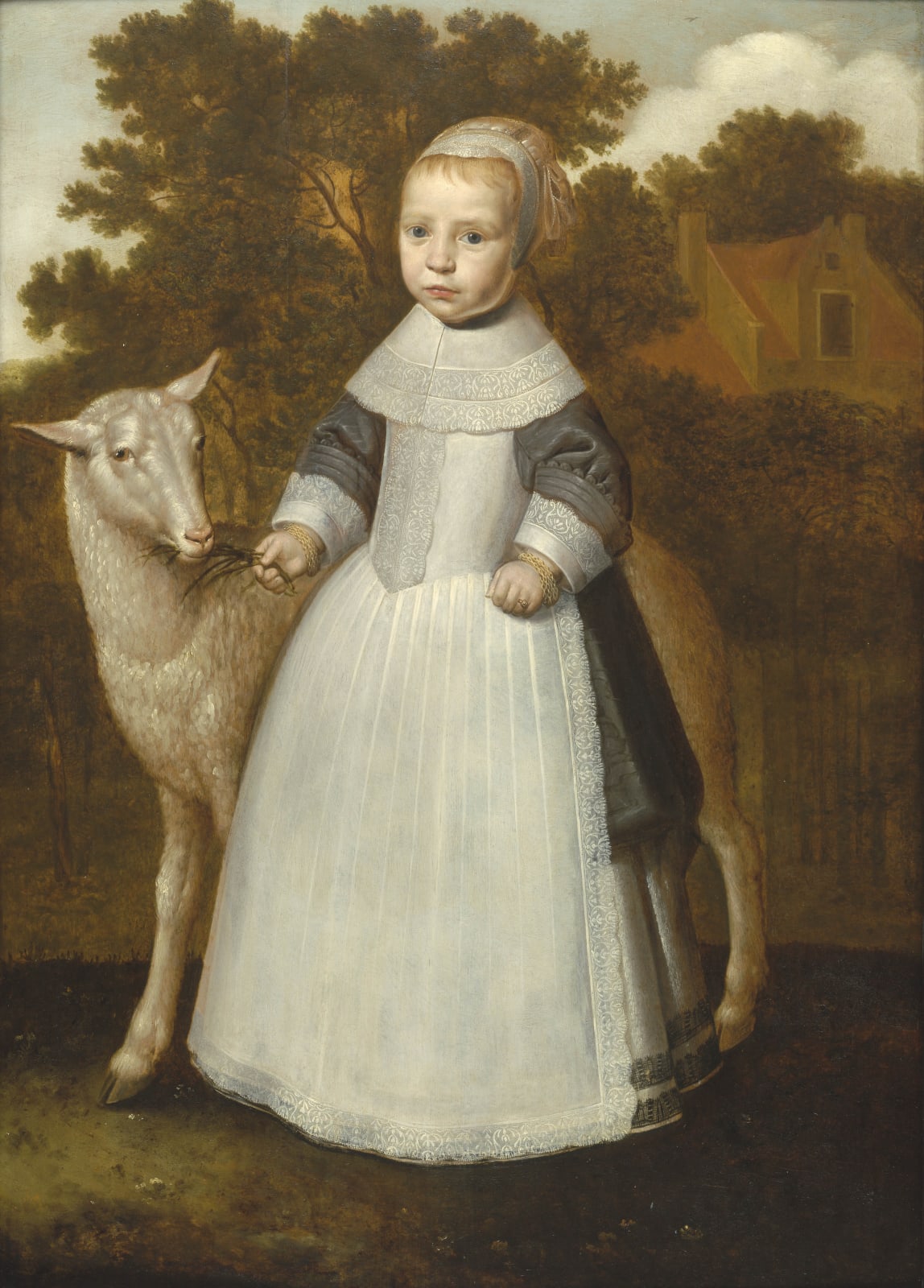Attributed to Jan Albertsz. Rotius (1624 – 1666)
Provenance
Private collection, England, c.1910; thence by descent until
Bonhams, London, 6 July 2011, lot 125 (as ‘Attributed to Jacob Gerritsz. Cuyp’);
The Weiss Gallery, 2011 – 2012;
Private collection, France.
Publications
The Weiss Gallery, Facing History: Northern European Portraiture 1570 – 1735, London 2019, pp. 58 – 59, cat. 12 (as 'Attributed to Dirck Dircksz. Santvoort').
The portrait can be dated by costume and comparable portraits by Jan Albertsz. Rotius from circa 1650. Our young girl wears a white bodice with an intricately rendered double row of lace down the front, echoed at her neckline, where the two rows of lace line the round-shoulder collar. The skirt is raised all around to reveal her embroidered underskirt, another sign that we are looking at a young girl and not a boy.[1] The way in which our artist has articulated the fine and intricate lacework, particularly the trimming around the starched dress, is very much in keeping with Rotius’s own interpretation of that material. Accessories were often used inventively in children’s portraiture of the time, and the pastoral setting reflects the growing interest in rural life evident in Dutch literature and art from the beginning of the seventeenth century, at a time when the cities themselves flourished as mercantile hot spots.[2] It is likely that the sitter’s family wanted to express an idealisation of outdoor life and pursuits, in contrast to their actual situation as wealthy town-dwellers. The lamb, of course, further serves to emphasise the virtuous innocence of the child. The woodland cottage beyond would seem far from the actual reality of her life. Here, she emerges from the scene as a miniature shepherdess tending to her lamb with blades of grass.
Jan Rotius was known as ‘Rembrandt van Hoorn’ because of his portraits of West Frisian regents and militia pieces that were akin to Rembrandt’s Amsterdam-based equivalents. In the second half of the seventeenth-century, Rotius was the most important portrait painter of the Zuiderzee port of Hoorn, where he depicted the local elite, patriciate and militia from 1649 onwards. Although Rotius' militia pieces show a loose and even sketchy style, the conservative Hoorn elite commissioned appropriately more stereotypical portraits of themselves. Those commissioned of their children, such as the present portrait, are more lively and more interesting, both in composition and iconography. Very much like those painted by the Amsterdam-based Dirck Santvoort (c.1610 – 1680), Rotius presented young, impressionable children in full-length within simple, generalised backgrounds and accompanied by animals, as seen here. Their clothing was costly and somewhat impractical considering their ruralised settings.
Comparable portraits, which support our attribution to Rotius, include Portrait of a boy (Manchester City Art Gallery), Portrait of an unknown boy with a buck (formerly with Rafael Valls), Portrait of a 4-year-old boy with a buck (Rijksmuseum), and Portrait of a boy with a buck (last sold at Lempertz in 1906).[3]
[1] J. B. Bedaux & R. Ekkart, Pride and Joy: Children’s Portraits in the Netherlands 1500-1700, Amsterdam 2000, p. 79.
[2] Ibid., p.134 and 160.
[3] Manchester: rkd.nl/explore/images/125257 - Rafael Valls: rkd.nl/explore/images/66119 - Rijksmuseum: rkd.nl/explore/images/15061 - Lempertz: rkd.nl/explore/images/165101
